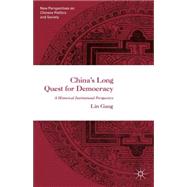This book compares several historical junctures during China's long journey towards democracy to observe the constraints of pre-chosen ideological and institutional patterns on political elites in advancing legal and electoral reforms.
Confucian legacies of moralism, elitism, and state centralism, in addition to revolutionary guardianship and populism remain embedded in Chinese practice in rule by law, grassroots autonomy, and intra-party democracy.
However, China's hope for democratic development is encouraged by urban and educational development, generational change and growing individualism. This book explores the feasible paths toward democracy in China, challenging methodological wisdom in employing quantitative changes in socioeconomic structure to predict change in the political system.









